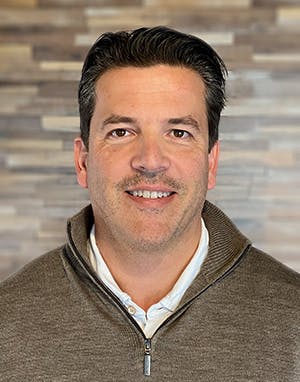How to Kick Off LPA Implementation with a Kaizen Event


The frequently referenced Learning Pyramid says an average student retains 75% of information learned through practice, compared to just 5% of what they hear in a lecture. While experts may dispute the relevance of these figures when applied to modern society, all of us can agree that we learn and retain more by doing versus being told in a classroom.
Depending on the maturity of your organization, launching or expanding a layered process audit (LPA) program can be complex and difficult to sustain. Which is why using a whiteboard in a meeting room may not be the best choice to kick things off.
An effective LPA program provides daily verification of high-risk processes, connecting leaders with front-line operators to develop a culture of coaching, feedback and continuous improvement. Rather than scheduling a presentation, a Kaizen event can be far more effective to get things off to a strong start, especially for plants just starting out.
In this post, you’ll learn about Kaizen events and how they can help you get started on your LPA journey.
What is a Kaizen Event?
A Kaizen event is a multi-day workshop (usually three to five days) aimed at accelerating improvement towards a specific quality goal. During a Kaizen event, team members focus solely on the project and should be exempt from their daily responsibilities.
Kaizen is a Japanese quality management term that translates to “change for the good,” and a Kaizen event is simply a concentrated version of that change effort.
Implementing LPAs with a Kaizen Event
Why should you consider starting your LPA implementation with a Kaizen event?
- It provides opportunities for hands-on training and stakeholder collaboration
- Management and operations can see firsthand how plant floor issues impact quality, improving buy-in
- You can make faster progress with LPAs, which often take time to ramp up
- Early momentum can help propel LPAs forward, instead of getting bogged down in the process
With that in mind, let’s look at 5 steps for kicking off your LPA implementation with a Kaizen event.
1. Build Your LPA Implementation Team
You want experts on the implementation team who can help develop effective LPA questions. Consider including:
- A Kaizen leader familiar with process activities to facilitate the event
- People who actually work in the project area
- A front-line leader or supervisor from the project area
- Upper-level management from the project area
- Quality managers from high-performing plants who can provide fresh perspective on quality issues and best practices
2. Prepare for the Kaizen Event
For your event to run smoothly, you’ll need to think about providing:
- Training materials and background data
- Brainstorming tools like easels or whiteboard space
- Travel arrangements for out-of-town participants
- Coverage for participants’ normal responsibilities
- Support from management, IT and facilities
3. Develop LPA Questions and Checklists
A big part of LPA implementation is developing LPA questions and checklists. While you may start with brainstorming based on input from participants and review of historical data, keep in mind that visiting the plant floor is essential building an effective question library.
Just like in a Gemba walk, you’ll learn much more by going to where the work is actually done than by sitting in a conference room. This gives participants the chance to interact with operators to uncover challenges and potential improvements directly, an opportunity that senior-level participants may not have had previously.
As you develop checklists, remember that each one should only have 10 to 15 questions so that audits only take about 10 minutes to complete. Questions should be:
- Objective: Use yes or no questions where “yes” means passing and “no” requires follow-up.
- Specific: Avoid terms like “properly” or “correctly,” stating any tolerances or specifications for verification.
- Concise: LPAs should be short, and each question should be simple enough for a non-expert to answer.
4. Learn How to Conduct LPAs
Once you’ve developed a set of starter LPA checklists, the best way to train people to conduct LPAs is to hit the plant floor for some hands-on practice.
Some things to keep in mind as your team learns how to conduct LPAs:
- Audits are an opportunity for coaching and feedback, and blame should be avoided at all costs.
- Auditors should focus on the “why” behind each question to get to the root of process issues.
- Auditors need to demonstrate respect to the person they’re auditing, such as by making eye contact and acknowledging what the operator is doing right.
5. Compile LPA Best Practices and KPIs
Now it’s time to take what you’ve learned and standardize the information into LPA best practices and key performance indicators (KPIs). While these will be unique to your organization, basic best practices include the following:
- To maximize value, you should have custom checklists for each work area instead of one generic checklist.
- Since LPAs involve a large volume of audits, consider how you will prevent pencil-whipping and missed audits.
- Audit results should be reviewed at least monthly. How often will reviews take place, who is responsible and what metrics will you monitor?
An automated LPA platform provides a distinct advantage in terms of these goals, allowing you to:
- Randomize and rotate questions without recalling and redistributing paper checklists by hand
- Generate instant reports on custom KPIs to pinpoint improvements, eliminating manual data entry and lag time
- Track audit completion rates, send automated reminders and monitor audit duration to prevent pencil-whipping
Learning from Your Kaizen Event
It’s important at the end of your Kaizen event to recognize and show appreciation to participants, sharing lessons learned with the rest of the organization.
From a big picture perspective, LPAs are about creating accountability and verification around standards. Ali Rizwan, director of quality for 10 years at Continental, emphasizes that the biggest result from LPAs is that they enable better leadership.
“Leadership takes ownership,” he says. “Without data, you cannot take ownership.”
Ownership is what drives such big gains in defect and cost reduction, but it’s often where companies struggling with LPAs need the most help. A Kaizen event can give you the momentum needed to get going quickly while creating accountable, metrics-based systems that maximize LPA value.